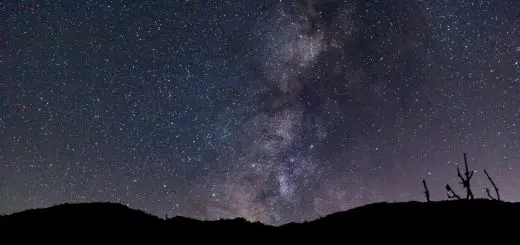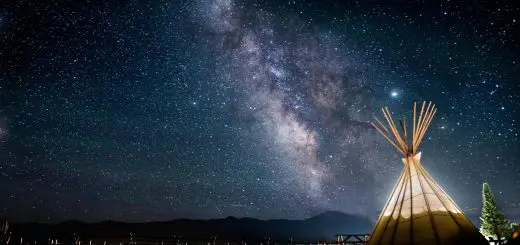Mesopotamian Mythology: Gods, Epics, and Divine Chronicles

Looking for more amazing products? Check out our online store and explore our collection here! Happy shopping!
Before diving in, please note: This post is for informational purposes only. If you’d like to know more about how we approach topics, feel free to check out our friendly Disclaimer Page.
Hey there, amazing readers! 
We’re committed to delivering quality posts, and your support (even just sticking around despite the ads) means everything to us. So, bear with us, and thanks for helping us keep the good vibes rolling. Now, on to the fun stuff!
TRANSLATE BUTTON AT THE END OF THE ARTICLE
Introduction to Mesopotamian Mythology
Mesopotamian mythology is a rich tapestry of ancient beliefs, stories, and deities that flourished in the region known as Mesopotamia, which encompassed modern-day Iraq, parts of Syria, and Turkey.
This civilization is often referred to as the cradle of civilization due to its significant contributions to human history, including the invention of writing, the wheel, and complex agricultural techniques.
Mesopotamian mythology played a crucial role in shaping the belief systems and cultural practices of the people who inhabited this region thousands of years ago.
The myths and legends of Mesopotamian mythology were passed down orally through generations before being transcribed onto clay tablets, providing a fascinating glimpse into the religious and spiritual practices of ancient Mesopotamians.
These myths often revolved around the interactions between gods and mortals, the creation of the world, the nature of the cosmos, and the afterlife.
The pantheon of Mesopotamian gods was vast and diverse, each deity playing a specific role in the divine hierarchy and governing various aspects of life on earth.
The Pantheon of Mesopotamian Gods
The Mesopotamian pantheon was populated by a myriad of gods and goddesses, each with their own unique powers, attributes, and spheres of influence.
Among the most prominent deities were Anu, the god of the heavens; Enlil, the god of wind and storms; and Inanna, the goddess of love and war.
These gods were often associated with particular cities or regions and had intricate relationships with one another, often depicted in ancient texts and artwork.
The Mesopotamian gods were believed to control all aspects of human existence, from the fertility of the land to the outcomes of battles and wars.
They were revered and worshipped through elaborate rituals and ceremonies, with temples dedicated to their honor built throughout the region.
The belief in these gods and goddesses underpinned the entire social and political structure of Mesopotamian society, with rulers often claiming divine authority and guidance from the deities themselves.
Epic Tales: The Babylonian Creation Myth
One of the most famous myths in Mesopotamian mythology is the Babylonian Creation Myth, which tells the story of how the world was formed out of chaos by the god Marduk.
According to this myth, the universe began as a formless and chaotic void, with the primordial gods Apsu and Tiamat representing the forces of freshwater and saltwater, respectively.
Apsu and Tiamat gave birth to the first generation of gods, who eventually rebelled against their parents, leading to a great cosmic battle.
In the Babylonian Creation Myth, Marduk emerges as the champion of the younger gods and defeats Tiamat in a fierce battle, creating the heavens and the earth from her dismembered body.
Marduk then establishes order in the universe, dividing the heavens into distinct regions and appointing the other gods to their respective roles.
This myth served to explain the origins of the world and the natural order of the cosmos, reflecting the Mesopotamians’ understanding of the universe as a place of both beauty and danger.
The Epic of Gilgamesh: An Overview
The Epic of Gilgamesh is perhaps the most famous literary work to come out of Mesopotamia, showcasing the hero’s journey of Gilgamesh, the king of Uruk.
This epic poem follows Gilgamesh’s quest for immortality after the death of his friend Enkidu, leading him to confront his mortality and seek answers from the gods.
Along the way, Gilgamesh battles fantastical creatures, navigates treacherous lands, and grapples with the nature of life and death.
The Epic of Gilgamesh is a profound exploration of what it means to be human, addressing themes of friendship, grief, power, and the search for meaning in a world filled with uncertainty.
This epic tale has inspired countless works of literature and has been translated into numerous languages, cementing its status as a timeless masterpiece of world literature.
The character of Gilgamesh himself has become an archetype of the hero’s journey, resonating with audiences across cultures and time periods.
The Enuma Elish: Babylon’s Creation Epic
The Enuma Elish, also known as the Babylonian Creation Epic, is another foundational myth in Mesopotamian mythology that details the creation of the world and the rise of the god Marduk to supreme power.
This epic poem recounts the primordial struggle between the gods and the forces of chaos, culminating in Marduk’s triumph over the dragon-like creature Tiamat.
Marduk then creates the heavens and the earth from Tiamat’s body, establishing order in the universe.
The Enuma Elish served as a hymn of praise to Marduk, the patron deity of Babylon, and was recited during the New Year’s festival to reaffirm the king’s divine right to rule.
This epic myth reinforced the idea of cosmic order and the importance of human beings in the divine plan, emphasizing the power of the gods to create and destroy as they saw fit.
The Enuma Elish remains a significant cultural artifact that sheds light on the religious beliefs and worldview of ancient Mesopotamians.
Inanna and the Descent to the Underworld
Inanna, the goddess of love, fertility, and warfare, is one of the most complex and intriguing figures in Mesopotamian mythology.
The Descent of Inanna is a myth that recounts her journey to the underworld, where she seeks to confront her sister, Ereshkigal, the queen of the dead.
Inanna must pass through seven gates, shedding her divine garments and attributes at each threshold, until she stands naked and vulnerable before her sister.
The Descent of Inanna is a powerful story of death, rebirth, and transformation, symbolizing the cyclical nature of life and the need to confront our deepest fears and desires.
Inanna’s descent into the underworld represents a descent into the depths of the human psyche, where the ego is stripped away, and the true self is revealed.
This myth has inspired feminist scholars and artists to reinterpret the story as a metaphor for female empowerment and the reclaiming of lost or hidden aspects of the self.
Enki and the Mesopotamian Flood Myth
The Mesopotamian Flood Myth, also known as the Epic of Atrahasis or the Epic of Ziusudra, is a story that predates the biblical account of Noah’s Ark and the Great Flood.
In this myth, the god Enki warns the hero Atrahasis of an impending flood sent by the gods to wipe out humanity due to their noise and clamor.
Atrahasis is instructed to build a massive boat and to save himself, his family, and pairs of animals from the deluge.
The Mesopotamian Flood Myth serves as a cautionary tale about the consequences of human arrogance and the need for divine intervention to restore balance to the world.
The story highlights the capricious nature of the gods and their ability to unleash destruction upon the earth if humans fail to heed their warnings.
Enki’s role in saving Atrahasis and the animals demonstrates the gods’ capacity for mercy and compassion, even in the face of widespread devastation.
Ishtar: Goddess of Love and War
Ishtar, the Mesopotamian goddess of love, fertility, and war, was a powerful and enigmatic figure in the pantheon of gods.
Known for her beauty, passion, and fierce temperament, Ishtar was both a source of divine protection and a force of destruction.
She was associated with the planet Venus and was often depicted riding a lion or wielding a bow and arrow, symbolizing her dual nature as both a lover and a warrior.
Ishtar’s mythology is replete with tales of her amorous escapades, her battles with other gods and demons, and her descent into the underworld in search of her lover, Tammuz.
She was worshipped through elaborate rituals and ceremonies, with temples dedicated to her honor in cities throughout Mesopotamia.
Ishtar’s complex nature reflects the Mesopotamians’ understanding of love and war as intertwined forces that shape the destiny of humanity.
The Epic of Atrahasis: The Great Flood
The Epic of Atrahasis is a Mesopotamian myth that recounts the story of the hero Atrahasis, who is warned by the god Enki of an impending flood sent by the gods to wipe out humanity.
Atrahasis is instructed to build a massive boat and to save himself, his family, and pairs of animals from the deluge.
After the flood recedes, Atrahasis offers sacrifices to the gods, who convene a council to decide the fate of humanity.
The Epic of Atrahasis serves as a precursor to the biblical story of Noah’s Ark, highlighting the themes of divine punishment, human survival, and the renewal of the earth after a catastrophic event.
The myth underscores the Mesopotamians’ belief in the cyclical nature of time and the need for humans to appease the gods through offerings and rituals.
Atrahasis emerges as a heroic figure who defies the will of the gods and preserves life on earth through his courage and resourcefulness.
The Epic of Adapa: A Tale of Wisdom
The Epic of Adapa is a Mesopotamian myth that centers around the wise sage Adapa, who inadvertently angers the god Enki and misses out on the chance for immortality.
In this tale, Adapa is granted wisdom and knowledge by Enki but is warned not to eat the food or drink the water of the gods, as it will trap him in the cycle of mortality.
When Adapa mistakenly rejects the offer of immortality from the gods, he is condemned to live as a mortal among humans.
The Epic of Adapa explores themes of wisdom, hubris, and the consequences of defying the divine order.
Adapa’s story serves as a cautionary tale about the limits of human knowledge and the importance of humility in the face of the gods’ power.
The myth underscores the Mesopotamians’ belief in the interconnectedness of the human and divine realms, where mortals must navigate the complexities of the spiritual world with reverence and humility.
Sumerian Kingship and Divine Chronicles
Sumerian Kingship and Divine Chronicles are a collection of texts that detail the genealogies of kings, their divine lineage, and their interactions with the gods.
These chronicles served to legitimize the rule of kings by tracing their ancestry back to the gods and establishing their divine right to govern.
The Sumerians believed that their kings were chosen by the gods to act as intermediaries between the divine realm and the earthly realm, ensuring prosperity and order in society.
The Sumerian Kingship and Divine Chronicles reinforced the idea of kingship as a sacred institution ordained by the gods, with rulers expected to uphold justice, protect the people, and maintain harmony with the deities.
These texts also emphasized the cyclical nature of time and the eternal bond between the gods and humanity, illustrating the interconnectedness of the spiritual and material worlds.
The divine chronicles provided a blueprint for the ideal ruler and set the standards for good governance in ancient Sumer.
The Epic of Enmerkar and the Lord of Aratta
The Epic of Enmerkar and the Lord of Aratta is a Sumerian myth that recounts the rivalry between the city-states of Uruk and Aratta over control of trade routes and access to precious resources.
The epic follows the exploits of Enmerkar, the king of Uruk, as he seeks to outwit the Lord of Aratta through cunning and diplomacy.
Enmerkar employs a series of ruses and stratagems to undermine his rival’s authority and secure Uruk’s dominance in the region.
The Epic of Enmerkar and the Lord of Aratta serves as a cautionary tale about the dangers of greed, pride, and arrogance in the pursuit of power.
The myth highlights the complexities of political rivalries and the strategies that rulers use to outmaneuver their adversaries.
Enmerkar’s cunning and resourcefulness ultimately lead to the defeat of the Lord of Aratta, establishing Uruk as a preeminent city-state in ancient Sumer.
This epic tale sheds light on the political intrigue and power struggles that defined the ancient world of Mesopotamia.
A Quick Overview
Mesopotamian mythology offers a fascinating glimpse into the religious beliefs, cultural practices, and worldview of the ancient civilizations that flourished in the region.
The pantheon of Mesopotamian gods was vast and diverse, each deity playing a specific role in governing various aspects of life on earth.
Epic tales such as the Babylonian Creation Myth, the Epic of Gilgamesh, and the Enuma Elish shed light on the origins of the world and the nature of the cosmos, while myths like the Descent of Inanna and the Epic of Atrahasis explore themes of death, rebirth, and divine intervention.
The Mesopotamian Flood Myth and the Epic of Adapa delve into the consequences of human actions and the capricious nature of the gods, while stories of Ishtar, Enki, and the Sumerian Kingship Chronicles reveal the intricate relationships between mortals and deities.
The Epic of Enmerkar and the Lord of Aratta provides insights into the political rivalries and power struggles that shaped ancient Mesopotamian society.
These myths and epics continue to resonate with audiences today, offering timeless lessons about the human condition and the eternal quest for meaning in a world filled with mystery and wonder.
Conclusion
Mesopotamian mythology is a treasure trove of ancient beliefs, stories, and divine chronicles that have captivated scholars, artists, and enthusiasts for centuries.
The pantheon of Mesopotamian gods, epic tales of creation and heroism, and myths of love, war, and wisdom provide valuable insights into the spiritual and cultural heritage of the ancient civilizations that once thrived in the region.
By exploring these myths and epics, we can gain a deeper understanding of the Mesopotamians’ worldview, values, and aspirations, and appreciate the enduring legacy of their rich and vibrant mythological tradition.

The Enlightenment Journey is a remarkable collection of writings authored by a distinguished group of experts in the fields of spirituality, new age, and esoteric knowledge.
This anthology features a diverse assembly of well-experienced authors who bring their profound insights and credible perspectives to the forefront.
Each contributor possesses a wealth of knowledge and wisdom, making them authorities in their respective domains.
Together, they offer readers a transformative journey into the realms of spiritual growth, self-discovery, and esoteric enlightenment.
The Enlightenment Journey is a testament to the collective expertise of these luminaries, providing readers with a rich tapestry of ideas and information to illuminate their spiritual path.
Our Diverse Expertise
While our primary focus is on spirituality and esotericism, we are equally passionate about exploring a wide range of other topics and niches 

To ensure we provide the most accurate and valuable insights, we collaborate with trusted experts in their respective domains 
Our blog originally focused on spirituality and metaphysics, but we’ve since expanded to cover a wide range of niches. Don’t worry—we continue to publish a lot of articles on spirituality! Frequently visit our blog to explore our diverse content and stay tuned for more insightful reads.
Hey there, amazing reader! 
Check out our store here and take a peek at some of our featured products below! Thanks for being awesome!












